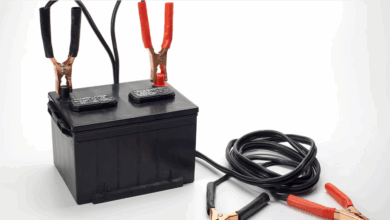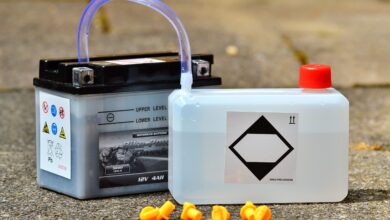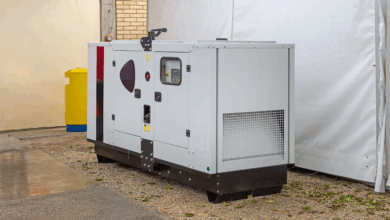Bluetti EB240 Review

This Bluetti EB240 review is based on extensive testing—covering capacity, performance under load, inverter efficiency, charging times, and overall usability.
Our team purchased the Bluetti EB240 back in January 2022. Since then, we’ve been using it in our off-grid workspace to evaluate its real-world performance.
After nearly 8 months of continuous use, I can confidently say that the Maxoak Bluetti EB240 is a solid addition to the Bluetti family.
Designed with RVs and off-grid lifestyles in mind, the EB240 boasts a 2400Wh capacity—an upgrade of roughly 900Wh over the EB150 model (1500Wh).
I maintain multiple off-grid cabins outfitted with solar setups, power stations, and generators. In locations without dedicated solar systems, the EB240 has proven itself capable of fulfilling most essential power needs.
This all-in-one portable power solution features multiple charging methods and includes a pure sine-wave AC inverter.
It delivers excellent value per watt, recharges at a decent rate, and holds up well in rugged environments thanks to its sturdy aluminum casing.
One feature I really appreciate is the 12V regulated output, ensuring a steady 12.1V regardless of battery charge level.
Early on, I saw concerns online regarding efficiency—some users reported less than 80% usable capacity. I conducted my own capacity test and share the results further down in this review.
As HOBOTECH mentioned on YouTube, this solar generator is roughly the size of two Battle Born batteries, which together cost around $2000. For a lower price, you get a durable unit with great build quality and several useful output options. That’s a strong deal.
Unboxing & Design
Design of Bluetti EB240
Delivery was quick and hassle-free. Inside the box, we received the power station, AC adapter, MC4 connector, charging brick, and a warranty card—everything you’d expect.
The case is made from durable injection-molded polymer, designed for long-term use. Despite its solid construction, the design remains fairly compact.
Weighing in at 48.5 pounds, it’s not exactly light—but the suitcase-style build and comfortable handle make it easy to move around.
All controls, ports, and the LCD display are located on the front. The screen provides data on charge level, input/output wattage, and system status indicators.
Control Panel and Ports
The EB240 includes separate power buttons for AC and DC outputs, so you’ll need to activate one depending on the output type you need.
Available Ports:
- 2 × AC outlets (110V)
- 1 × 12V DC port (9A)
- 1 × USB-C PD port (45W)
- 4 × USB-A ports (5V, 3A)
Charging Options for Bluetti EB240
Like most power stations, the EB240 offers three charging methods. I’ve tested all of them:
- AC Wall Charging: Using the included 200W adapter, a full charge takes about 14.6 hours. I wish it came with a faster charger—400W would’ve been ideal.
- Solar Charging: Thanks to the built-in MPPT charge controller, solar charging is up to 40% more efficient. Bluetti includes an MC4 connector and the EB240 can accept up to 500W solar input.
I had only 300W of solar available during testing, and the battery reached 100% in about 8.4 hours. With the full 500W input, you can expect a recharge in 5 to 5.5 hours.
- Car Charging: Technically possible, but impractical. Since most vehicles output 14–14.4V and the EB240 requires 16V input, you’ll need a 300W pure sine wave inverter to charge it from a vehicle.
What Devices Can the Bluetti EB240 Power?
We’ve successfully used the EB240 to power the following:
- Laptop (60Wh) – 33 recharges
- Smartphone (30Wh) – 254 recharges
- CPAP machine – 30+ hours
- LED lights (10W) – 200+ hours
- Wi-Fi router – 30 hours
- Blender (250W) – 7+ hours
- Microwave (600W) – 3+ hours
- Full-size refrigerator (160W) – Ran smoothly
One pleasant surprise: it powered a 15A table saw for a few seconds—even though it’s rated for 9A. Peak surge output went over 1500W.
Battery Capacity Test
Let’s tackle the efficiency issue that many reviewers have brought up. Claims online suggest the usable capacity is less than 80%, but my testing says otherwise.
Following the lead of HOBOTECH’s tests, I ran a 100W discharge test starting at 12.1V and found that the EB240 delivered 2080Wh—around 86.6% efficiency.
I repeated the test three more times, averaging 85.6% efficiency. This aligns closely with advertised performance, so it seems the early complaints may have been tied to older units.
Load Test & Inverter Performance
Using the 12V output, I was able to consistently pull 10 amps. Pushing beyond that limit wasn’t possible.
The inverter held up well during testing. I was able to draw 1190W for 3 minutes and 11 seconds. Bluetti claims 1200W for up to 3 minutes, which proved accurate.
Our older CPAP machine ran continuously for 32 hours—great for overnight use or emergencies.
Overall Performance
The EB240 uses battery cells that reportedly offer triple the life cycle of Jackery units—while costing less per watt-hour.
The real standout is the combination of large capacity and portability. In off-grid cabins and RVs, this unit can be a go-to power source.
During testing, I charged my RV’s house battery and powered multiple devices under 1000W. I even ran a 5000 BTU air conditioner for an entire day by maintaining consistent 400–500W solar input. Without solar input, it ran the AC for 3 to 4 hours—still impressive.
Compared to the EB150, the EB240 allows for higher voltage inputs and lets you connect three solar panels in series.
Final Thoughts: Where It Falls Short
The most obvious limitation is the inverter’s 1000W rating, which feels low considering the 2400Wh battery capacity. A 1500W or even 1600W inverter would’ve been a more balanced match.
Another gripe is the use of a barrel plug for solar input rather than an Anderson Powerpole, which would’ve been a smarter choice for handling 500W of input.
Who Should Buy the Bluetti EB240?
If you need a powerful yet portable power station for off-grid living, camping, or RV use, the Bluetti EB240 is a solid investment. It’s reliable, efficient, and solar-ready.
What I Like:
- Large battery capacity
- Accepts up to 500W solar input
- Passed load and capacity tests
- Easily runs anything under 1000W
- Quiet operation
- Compact and easy to transport
What I Don’t Like:
- Lacks Anderson power connector
- Inverter limited to just 1000W




![How to Bypass CO Sensor on Generator – [4-Step Safety Guide]](https://www.generator411.com/wp-content/uploads/2025/08/co-sensor-on-generator-390x220.png)